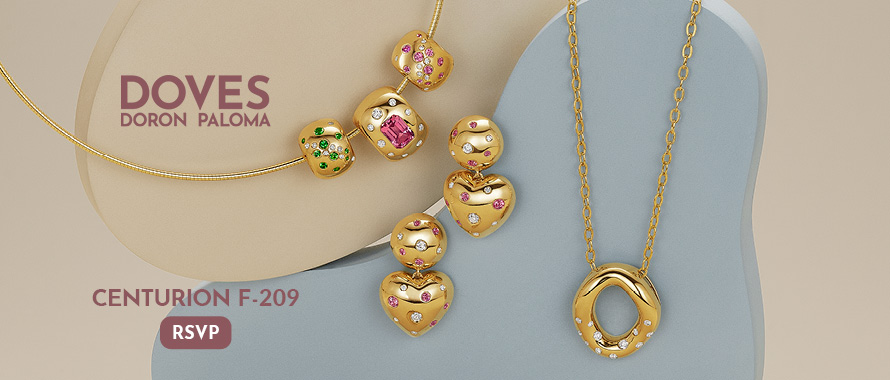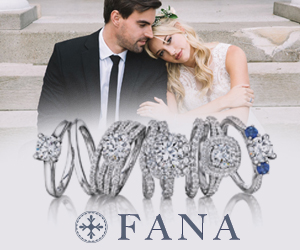Sales Strategy
Prepare To Sell To The Post-Pandemic Jewelry Consumer | January 20, 2021 (0 comments)
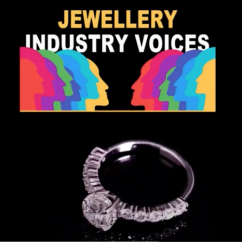
Princeton, NJ—"The number-one thing we heard from our customers last year was, 'I know we are in a pandemic, but it's my wife's birthday. Can you help me?’"
Those reassuring words from Andrew Siegel of Hamilton Jewelers, echoed the experience of most fine jewelers across the nation last year and propelled jewelry into one of the few luxury categories to benefit from the emotional and economic turmoil of the coronavirus pandemic.
While jewelry doesn’t have the same urgency as, say, groceries or disinfectant, it fills an emotional need amplified by the events of 2020. But what will happen in 2021 and beyond? Will consumers return to their pre-pandemic shopping habits or have those been permanently altered? And where does jewelry fit in?
“Preparing For The Post-Pandemic Consumer” was the theme of the first 2021 installment of CIBJO’s Jewellery Industry Voices webinar series. Sponsored by the Natural Diamond Council, the event panel included Siegel, the fourth-generation chief operating officer of Hamilton Jewelers, a luxury retailer with stores in New Jersey and Florida; Anita Balchandani, a partner for the consulting firm McKinsey & Co., in the apparel fashion luxury group in its London offices; journalist Melanie Grant, luxury editor of 1843 Magazine, a sister publication to The Economist; and Charles Bonas, head of the Bonas Group, an auction tender house for diamond and emerald miners. He is also the founder and chair of Holition, a company that develops digital experiences for luxury companies.
The panel was moderated by CIBJO’s Edward Johnson, who posed the overarching question of the session: what will be the new normal, and how has that impacted the way luxury jewelers sell?
Edward Johnson: McKinsey’s latest report says that while the crisis has had devastating impact on businesses and jobs, it may have also accelerated responses that lead to business and jobs. How has that impacted luxury?
Anita Balchandani: Many trends we’ve seen through pandemic are an acceleration of trends we saw before. Interruption of travel is a disruption, but otherwise we see a digital acceleration in luxury and jewelry. The pandemic has proven consumers are willing to shop for very high price points in digital environment. We believe a lot more thought is going into collecting and collection development and the [luxury] industry is taking the opportunity to use this crisis to innovate and reimagine how it operates. Whether it’s digital, in sustainability and justice, or making collections work harder and doing more with less, all are good ways the industry will evolve.
That said, we can’t detract from the devastating impact the pandemic has had overall. In the broader fashion sector, profit is down 93% but the luxury sector is more resilient. It’s a brilliant opportunity to reshape and rethink the industry in a way we want to see it develop.

Anita Balchandani of McKinsey & Co.
Johnson: ‘Build back better’ is something people are trying to live their lives by. Andrew, what are the main changes you’ve seen on ground?
Andrew Siegel: The world economy is different from the US [sic], and the US economy is different from state to state. But we’re seeing changes in our stores. We’ve seen a preference for digital interaction with in-person conclusion. It used to be online research, in-person consultation. Now the consultation also is online and the time we are face-to-face [with the customer] is really compressed. It’s curbside pickup. We still see people coming in, but that face-to-face time is limited and we expect that to continue as long as customers feel they can have meaningful interaction digitally.
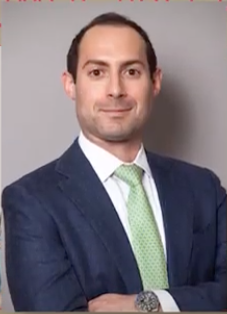
Andrew Siegel, COO of Hamilton Jewelers
Charles Bonas: In 2020, what percentage of consumers came to the store to buy?
Siegel: 80% did research beforehand, and more than half knew what they wanted when they came in. Many come in with a photo from Instagram. So how do we guide them or, after conversation, they want something different?
Johnson: Will this continue, or will consumers go back to old ways [after the pandemic]?
Siegel: One thing we’re seeing a lot of is shopping for engagement rings together as a couple. Everyone is quarantined together. You already know, you’ve talked about getting engaged. That sort of communication, being locked down, will continue. What see even more is that browsers will be less and less prevalent. If you’re walking into a jewelry store, you’re there for a reason. You know what you want. We think that just this information gathering and speaking with each other and knowing what you want will continue going forward.
Johnson: Melanie, once people are allowed back into stores, how do we get them back into brick and mortar shopping? How has the role of store changed? (Editor’s note: Both Johnson and Grant live in London, which at the time of the webinar had much tighter COVID lockdown restrictions than the United States.)
Melanie Grant: You need not just the experience, but a spectacle of experience. On one hand is your digital experience, which younger people are entirely comfortable with, but collectors want to go somewhere. It’s a leisure pursuit, to spend a day looking. I don’t see that ever going away. That’s the end result for the 80% of people looking at things online. To hold that interest, you have to create a buzz around who you are as brand. It’s not enough to put a bit of bunting up and say ‘please come in.’ The role is changing from just looking at [your] heritage, but younger customers are very interested in who you are, what you stand for, and the soul of brand. It has to be more than marketing chat; it’s all about meaning. If you’re into sustainability, then really have that conversation.

Melanie Grant of 1843 Magazine
Johnson: Charles, what is the potential new normal for retailers?
Bonas: One of wonderful things about our industry in terms of retail, is that we normally don’t have hundreds of people in a store, so we can manage it and make it very personal and special. We can allow staff to have a glass of champagne with customers and spend two hours with them.
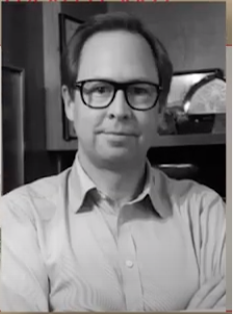
Charles Bonas of Bonas Group and Holition.
Johnson: What are some characteristics of companies or brands that came out of the shutdown stronger, and what characteristics will aid future success?
Siegel: At Hamilton, we call it ‘high tech, high meaning.’ Customers should leave either the store or the digital experience smiling, no matter how it’s done.
You would think global brands with all their resources and deep pockets would leave this [pandemic] better and small independents would suffer, but in the USA it’s the opposite. I think it’s the high touch/high tech aspect. It’s being able to pivot quickly and meet customer needs. An independent retailer knows their customers and community, and the vault where you have the goods is right there. They understand that high level of personalized service still has to happen even though commerce as we knew it has stopped.
It’s also how organizations treat their own people. It’s not just being able to meet the needs of customers, but of employees as well. We call our employees our internal customers. We kept employees employed and on our health plan [through the pandemic]. It created a lot of loyalty and we had very little ramp-up time once we reopened to public.
Johnson: What is your outlook coming out of the pandemic?
Balchandani: I’m predicting that as we start to come out of this rather restricted lifestyle, we will see resurgence of self-expression, of glamour, and also a huge pent-up demand for weddings and special occasions that were put aside. So the jewelry industry can play huge role here in the excitement that will follow this phase we’re in.
Bonas: This is the second downturn I’ve come through, including 2008. In both, our product is incredibly resilient.
Grant: We’ll see some revenge spending, people going crazy after lockdown. People will have pent-up budget from not traveling. We need our storytelling to be better and need to inject meaning into what we sell and why it will change your life. The right piece of jewelry changes your life and we need to explain that in way people can understand. We need people to understand why we are obsessed with jewelry.
Siegel: Cautious optimism. I feel as though the industry is willing to pivot and adapt and meet customer where they want to be. We can do that, no doubt about that.
